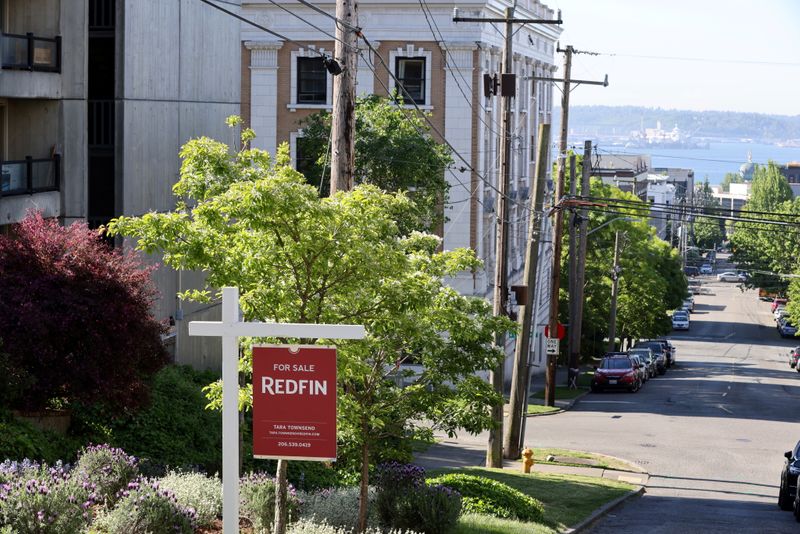WASHINGTON (Reuters) - U.S. home sales rebounded in June after four straight monthly declines, but the pace was moderate as higher prices and low inventory remained constraints.
Existing home sales increased 1.4% to a seasonally adjusted annual rate of 5.86 million units last month, the National Association of Realtors said on Thursday. Sales rose in the Northeast, West and Midwest. They were unchanged in the densely populated South.
Economists polled by Reuters had forecast sales would rise to a rate of 5.90 million units in June.
Home resales, which account for the bulk of U.S. home sales, increased 22.9% on a year-on-year basis.
The COVID-19 pandemic fueled demand for houses as millions of Americans switched to remote work and schooling.
Supply was already tight before the pandemic and is unlikely to improve as builders battle higher costs for raw materials, including lumber and concrete. Labor and building lots are also in short supply. The Commerce Department reported on Tuesday that permits for future homebuilding dropped to an eight-month low in June.
Realtors, homebuilders and a group of other stakeholders met last Friday with White House officials, including Commerce Secretary Gina Raimondo and Housing and Urban Development Secretary Marcia Fudge, to discuss strategies to address the short-term supply chain disruptions in the homebuilding sector.
The median existing house price increased 23.4% from a year ago to $363,300 in June. Higher prices are in part due to sales being concentrated in the upper end of the market. Bidding wars have become the norm across the country, though the NAR said the number of multiple offers was declining.
There were 1.25 million previously owned homes on the market last month, down 18.8% from a year ago. At June's sales pace, it would take 2.6 months to exhaust the current inventory, down from 3.9 months a year ago.
A six-to-seven-month supply is viewed as a healthy balance between supply and demand. Economists do not believe another housing bubble is developing, noting that the surge is being mostly driven by a mismatch between supply and demand, rather than poor lending practices, which triggered the 2008 global financial crisis.
But higher home prices could dampen demand. The University of Michigan's survey of consumers published last week showed consumers' complaints about rising home prices holding at an all-time high in early July.

In June, properties typically remained on the market for 17 days, matching May's all-time low. Eighty-nine percent of the homes sold last month were on the market for less than a month.
First-time buyers accounted for 31% of sales in June, down from 35% a year ago.